Tradition
About Andrew Cusack
 Writer, web designer, etc.; born in New York; educated in Argentina, Scotland, and South Africa; now based in London.
Writer, web designer, etc.; born in New York; educated in Argentina, Scotland, and South Africa; now based in London. read more
News
Blogs
Reviews & Periodicals
Arts & Design
World
France
Mitteleuropa
Knickerbockers
Argentina
The Levant
Africa
Cape of Good Hope
Netherlands
Scandinavia
Québec
India
Muscovy
Germany
Academica
Russia Turns a Cinematic Page in History
Big-budget film celebrating anti-Communist hero & White Russian leader Admiral Kolchak is partly funded by Russian government
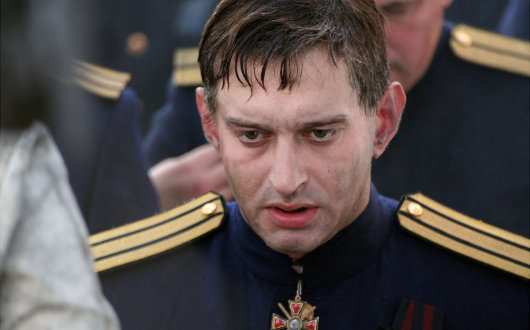
Here’s a film that has it all: naval battles, mutiny, revolution, civil war, brave men, beautiful women, sin, sacrifice, and betrayal on multiple levels. But “Admiral” («Адмиралъ»), which opened in Russia this month, is notable for another reason: this is the first major film depicting the tsarist White Russians as the good guys to receive at least part of its funding from the Russian government. The eponymous hero of the film is Alexander Kolchak, the naval commander and polar explorer who later led part of the White Army fighting the Bolsheviks during the Russian Civil War.
The Coronation of Blessed Charles
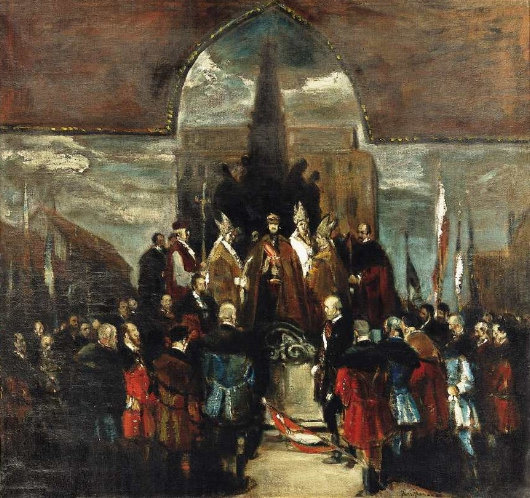
Blessed Emperor Charles was crowned as Apostolic King of Hungary on the 30th of December in 1916. It was the last Hapsburg coronation to this day. For those interested there are two accounts which do justice to the sacred rites. One is by that most devoted admirer of the Hapsburgs, Gordon Brook-Shepherd, in his excellent biography of Charles, The Last Hapsburg. (Brook-Shepherd also wrote excellent and quite readable biographies of the Empress Zita, of Crown Prince Otto, of Chancellor Dollfuß, and Baron Sir Rudolf von Slatin Pasha).
Charles & Zita
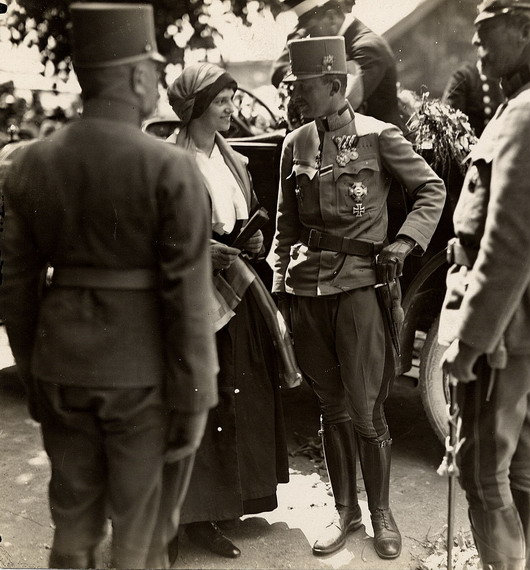
October 21 was chosen as the Feast of the Blessed Emperor Charles not because it is the date of his death — which is 1 April 1922 — but rather to commemorate the marriage (photo, below) between Archduke Charles of Austria (as he was then) and Princess Zita of Bourbon-Parma in 1911. While Charles died a mere thirty-four years of age, Zita lived on to ninety-six before passing away in 1989 (when I myself was four).
Not very long ago I was in Quebec City, which was where the Empress Zita and the Imperial Family spent their exile during the Second World War. The Hapsburgs, dispossessed first by the Socialists and then by the Nazis, were then so poor they had to collect dandelions from which to make a soup, but they took poverty in their stride. Passing a grassy bit near the Chateau Frontenac, I wondered “Did Crown Prince Otto once pluck weeds from this plot to feed his hungry mother and siblings?”
Also in that ancient Canadian city is La Citadelle, that great hunk of stone and earthworks, perhaps the oldest operational military installation in the New World. There we were lucky enough to be granted access to the tomb of the greatest Canadian, Major General the Rt. Hon. Georges-Philéas Vanier, Governor-General of Canada from 1959 until his death in 1967. General Vanier and his wife had such a reputation for Christian charity and piety that the Vatican is collecting evidence towards their eventual recognition as saints. Their son is Jean Vanier, the founder of the famous l’Arche communities that care for the handicapped and the disabled. I wonder if the Hapsburgs and the Vaniers ever crossed paths in wartime Quebec…
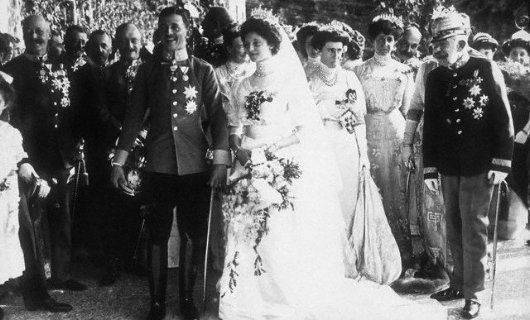
pray for us!
Sorb Serf Story Shown on Silver Screen
Otfried Preußler’s retelling of old Wendish legend hits German cinemas
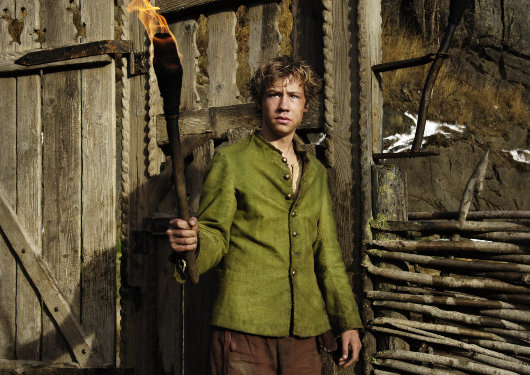
Follow your dreams! It may sound like a Hollywood cliché, but what’s a fourteen-year-old orphaned Sorb peasant to do? Currently showing in German cinemas, “Krabat” is the first film version of Otfried Preußler’s 1971 novel of an old Sorbian tale whose eponymous protagonist is a beggar boy in the eastern Saxony of the early 1700s. Krabat is plagued by dreams of an old watermill outside the tiny hamlet of Schwarzkollm, which seems to be operational though farmers never bring grain to be milled.
From the memoirs of Miklos Banffy
« After getting home I must admit that I slept soundly, although occasionally, when still half-asleep, I seemed to hear more rumbling of heavy lorries passing under my windows than on previous nights. However, since the street outside was the habitual route for deliveries to the market halls nearby, and the market cars had always rattled past noisily long before dawn, it did not seem to be different from any other night in the year.
It was only later that I heard what had happened early that morning. When my old valet called me he announced three things: my bath had been prepared, revolution had broken out, and Count Mihály Károlyi was now Minister-President. »
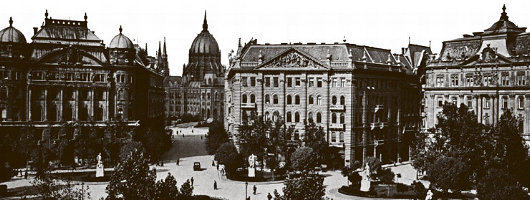
The Badge of the Cincinnati
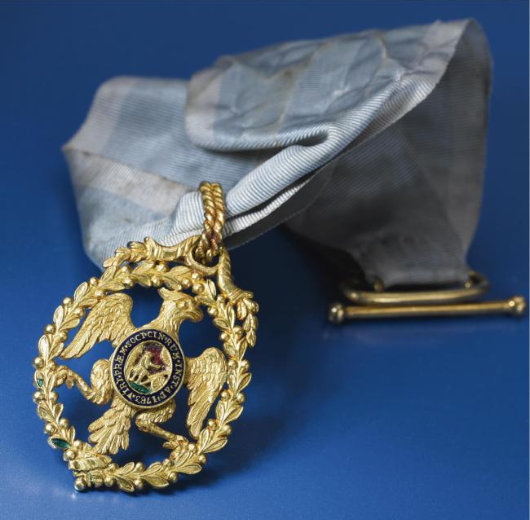
George Washington’s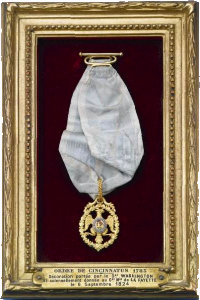 Society of the Cincinnati medal was auctioned off at Sotheby’s last year for a whopping $5,305,000. Founded by General Washington and other officers of the Continental and French armies who served in the American Revolution, the Society of the Cincinnati is the oldest and most prestigious of America’s many hereditary societies.
Society of the Cincinnati medal was auctioned off at Sotheby’s last year for a whopping $5,305,000. Founded by General Washington and other officers of the Continental and French armies who served in the American Revolution, the Society of the Cincinnati is the oldest and most prestigious of America’s many hereditary societies.
Louis XVI was himself a member, and the Society was known as the ordre de Cincinnatus in France, where it was added to the hierarchy of orders (even though it was not, strictly speaking, an order) as ranking just below the Order of Saint Louis.
General Washington’s Cincinnati badge was, after his death, given to the Marquis de Lafayette whose descendants kept it in the family until the auction last December.
Let Louis XVI Rest in Peace; A Funeral Mass in Manhattan
By PETER STEINFELS | The New York Times | July 17, 1989
They came not to praise the French Revolution but to bury it.
In the place of tricolor bunting, there were the black vestments of an old-fashioned Roman Catholic funeral Mass. Instead of fireworks, there were the flickering candles of a Manhattan church. Instead of the “Marseillaise,” there was the rise and fall of Gregorian chant.
They came not to praise the French Revolution but to bury it. In the place of tricolor bunting, there were the black vestments of an old-fashioned Roman Catholic funeral Mass. Instead of fireworks, there were the flickering candles of a Manhattan church. Instead of the “Marseillaise,” there was the rise and fall of Gregorian chant.
The South African Fleet Review
Africa’s oldest navy parades its newest frigates
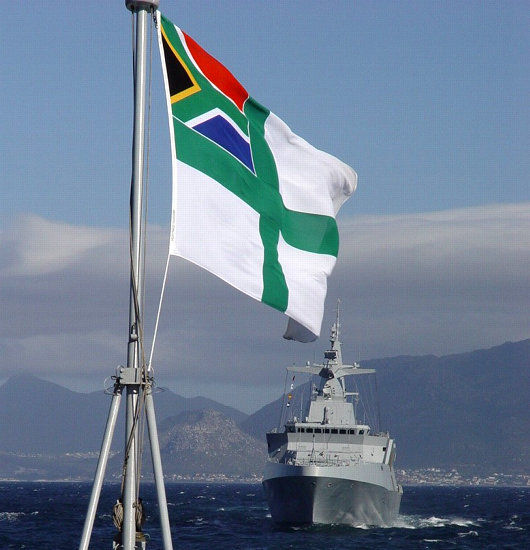
Fleet reviews are not very common occurrences. According to legend, the first fleet review took place when King Henry VIII on a whim gave the order to assemble his navy’s ships as he wanted “to see the fleet together”. On that occasion, the omnivorous monarch was rowed from vessel to vessel and enjoyed a repast on each. The tradition of the monarch reviewing the fleet continued, and usually took place to commemorate the coronation, to welcome a visiting monarch, or to commemorate some other event or occasion of great import.
Since the time of George III, British fleet reviews have typically taken place at Spithead between Portsmouth and the Isle of Wight. The 1814 review celebrating the Treaty of Paris was the last to be composed of only sailing ships, and included fifteen ships of the line and thirty-one frigates: “the tremendous naval armaments which has swept from the ocean the fleets of France and Spain and secured to Britain the domain of the sea”. The 1937 Coronation Fleet Review was made famous by the BBC radio commentary given by Lieutenant-Commander Thomas Woodrooffe. The retired naval officer had met up with a number of chums from his more sea-worthy days in a pub before the broadcast. Woodrooffe’s commentary was so incoherent that he was taken off the air within a couple of minutes; as the fleet was specially illuminated in the evening, Lt.-Cdr. Woodrooffe continually repeated “the Fleet’s lit up”; “lit up” also being a euphemism at the time for being drunk.
Words of Windisch-Grätz Wisdom
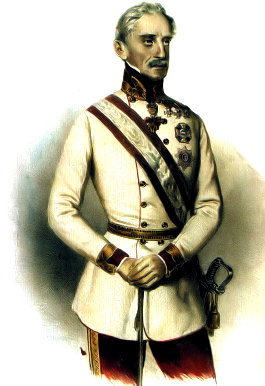
Prince of Windisch-Grätz
on the liberal constitutionalist rebels
Horse & Hound in Montreal

A splendid afternoon is the best way to describe it. Last Sunday up in St-Augustin-de-Mirabel it was the annual hunter trials of the Montreal Hunt Club – the oldest hunt in the New World. Club treasurer Annette Laroche suggested swinging by the Club sometime and as it happens a good friend had just moved to Montreal. So when Raymond Côté (seen in the previous post jumping on the beautiful white mare Frimousse) sent an invite to the hunter trials, I knew it’d be foolish not to take the opportunity to visit the beautiful land of Quebec for the first time in many years.
The Petit Séminaire de Québec
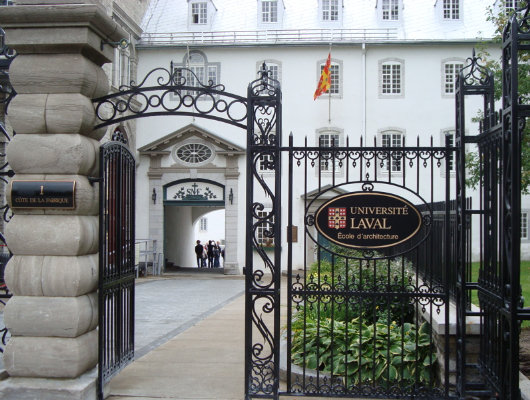
Adjoined to the ancient Cathedral Basilica of Notre-Dame in Quebec City is the Petit Séminaire. The Séminaire de Québec was founded in 1663 by the Blessed François Laval to train priests for the Vicariate Apostolic of New France, and the Petit Séminaire, its secondary school, was founded just five years later to teach both colonial French and native Indian youths. Among the school’s former pupils are four prime ministers of Québec, two lieutenant-governors (as the Queen’s viceregal representative in the province is known), and many other writers, politicians, and important figures of history. The Petit Séminaire survives today as a private Catholic secondary school.
Quebec
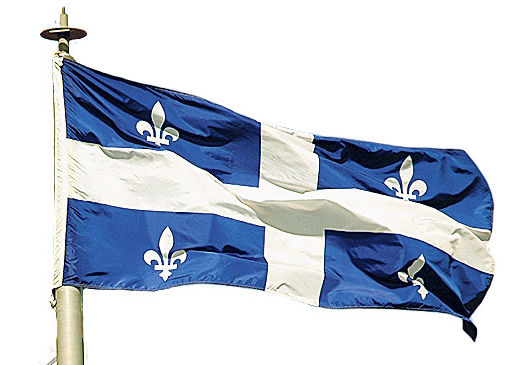
I will be off in Quebec for a few days.
Prinsjesdag
The State Opening of the States-General of the Netherlands
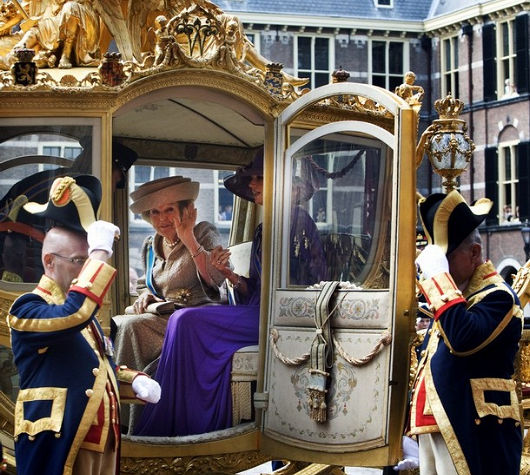
The third Tuesday in September beholds Prinsjesdag — the Day of the Princes — when the Queen of the Netherlands formally opens the annual parliamentary session of the States-General. Queen Beatrix arrives at the Ridderzaal (Knight’s Hall) of the Binnehof palace in the center of The Hague by means of the Gouden Koets (Golden Coach) presented to her predecessor Wilhelmina by the grateful burgers of the city of Amsterdam.
Germany carved amongst her neighbours
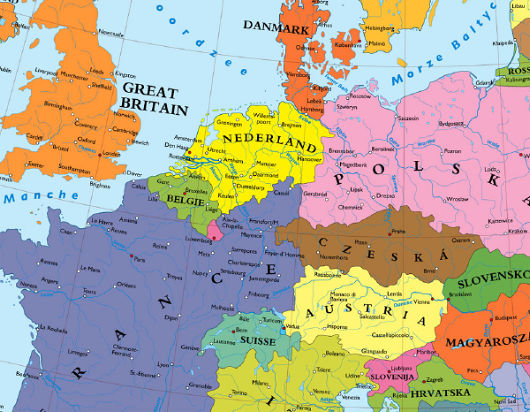
What is this cartographic madness? Hanover part of the Netherlands? Kassel ruled by France? Nuremburg part of a Bohemia that reaches to the Frankfurt suburbs? Hamburg in Denmark? Regensburg on the Austro-Czech border? I came across the company Kalimedia in an article from Die Zeit a month or two ago and discovered their map of a Europe without a Germany. Believe it or not, there were plans of one sort or another to achieve similar results at the end of the Second World War. The major plan for the dissection of Germany was merely a creation of Nazi propaganda, and while the vaguely similar Morgenthau Plan did exist, it was soon shelved once its impracticality became obvious.
The Bakker-Schut Plan, meanwhile, was a Dutch proposal for the annexation of several German towns, and perhaps even a number of German cities. German natives would be expelled, except for those who spoke the Low Franconian dialect, who would be forcibly dutchified. They even came up with a list of new Dutch names for German cities: c.f. the post at Strange Maps on “Eastland, Our Land: Dutch Dreams of Expansion at Germany’s Expense”.
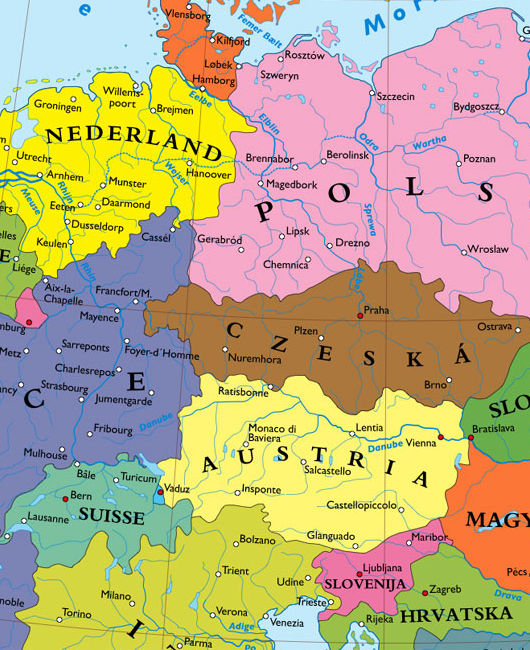
Swan Upping
The Palace has released this YouTube video on the ancient practice of swan upping.
Her Excellency

Quentin Bryce was yesterday sworn in as the Queen of Australia’s representative in her kingdom spanning that southerly continent.
The Tonga Coronation, 1967
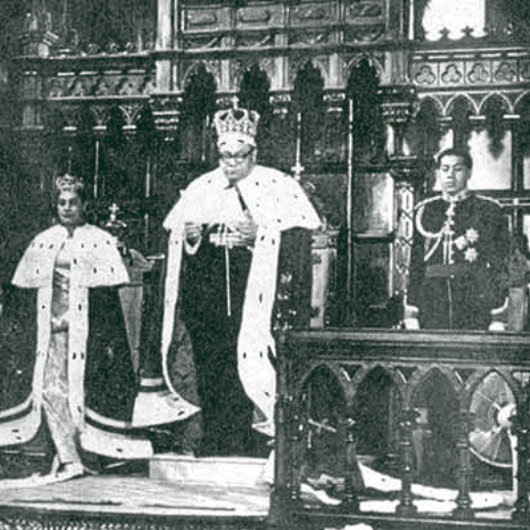
The 1967 coronation of the late King George IV of Tonga took place in the Chapel Royal. Unfortunately, the charming gothic revival structure burnt down some years ago, and so the latest coronation — that of George V — took place in the more spartan surroundings of the Centenary Church.
Elsewhere: See “islomaniac” Cheyenne Morrison’s coverage of the recent coronation at The Private Islands Blog.
A Colonel Inspects His Regiment
Nils Olav and the King of Norway’s Guards

The King of Norway’s Guards is the household regiment of that Scandinavian sovereign, but their honorary colonel resides in Edinburgh, where the regimental band often performs in the famous Military Tattoo held each summer. This year, the Colonel was honored with no less than a knighthood and took the opportunity of the unit’s presence in Edinburgh to inspect the regiment. Ordinarily, this would be an unremarkable event were it not for the fact that the Colonel is Nils Olav, a penguin currently in residence at the Edinburgh Zoo.
What was that you were saying about “cheese-eating surrender monkeys”?
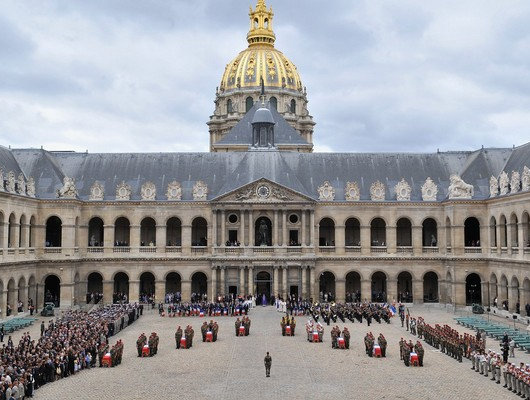
Yann Baly writes:
“Regarding the sacrifice of the 10 young French soldiers killed in combat in Afghanistan, we have heard many voices, including those of the families of the young parachutists, saying that they died for nothing.
“Politicians are duty-bound to question the timeliness of our engagement in Afghanistan under NATO command, in a war desired by the United States. We cannot remain silent when France, and French youth have, in the past, paid too heavy a price because of “sacred” unions in wars that diplomacy and sensible politics could have avoided.
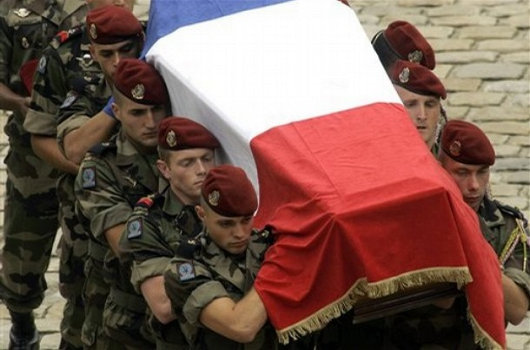
“Yesterday, in the majestic courtyard of les Invalides, the French people were able to recall that certain political errors are paid for in blood. It is therefore legitimate to wonder if Jacques Chirac (who was not present yesterday) and Lionel Jospin were right to send the French army into Afghanistan in 2001 and if Nicolas Sarkozy was not wrong to reenforce the contingent with the inadequate means we are all aware of. As Bernard Antony has reminded us, the United States has committed so many errors of foreign policy, so many criminal mistakes in its diplomatic and military actions, that one can doubt the need to be present in Afghanistan. History shows us that economic and oil interests have often been a decisive element in the American involvement in military conflicts. Fight efficiently against terrorism? There too, there are questions to be asked.
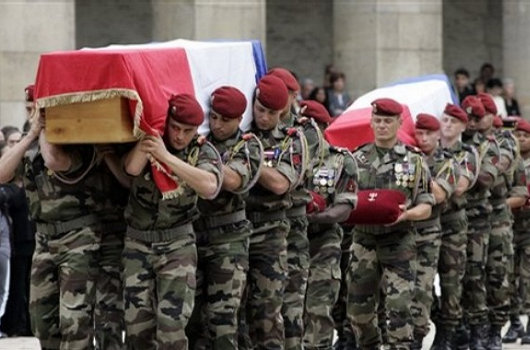
“Nonetheless, it is false to say that our young parachutists died for nothing. First of all, the French people have become conscious once again that they had an army. A month and a half after the tragedy in Carcassonne, the blood of these soldiers has washed away the lies, insults and spite, some of it coming from the head of State himself, heaped on the French army. But most of all, in our society where egoism and individualism are the rule, for a people who seem to have forgotten the meaning of sacrifice, their death in combat, at the age of 20 for most of them, is no doubt a sign of an imminent resurrection of the spirit of French resistance. In the current international and national context, this dimension is not insignificant. France, like the rest of the world, is entering into a period of uncertainties and grave risks. To be conscious of that and to prepare for it is not nothing.”
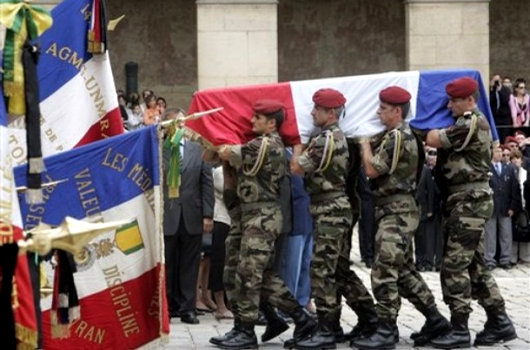
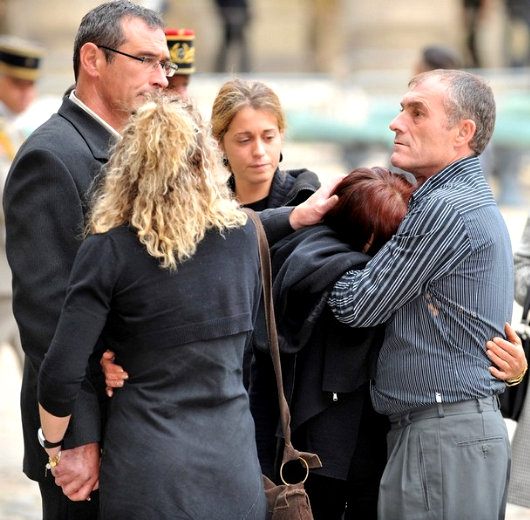
David Lumsden of Cushnie, 1933-2008
Garioch Pursuivant of Arms, sometime Baron of Cushnie-Lumsden, Knight of Malta, Patron of the Aboyne Highland Games

It was with great sadness that I learned this morning of the death of David Lumsden. He was an exceptionally genial and affable man, and was relied on to provide good company at many events, from balls to Sunday lunches and everything in between. But David was generous not only with his good company but with his patronage, as is attested to by the countless organizations he helped and guided. Here was a man who was generous of spirit. David’s death came very suddenly yesterday afternoon in his hotel room at the annual conference of the 1745 Association, of which he was president. Just last Sunday he had attended the traditional Mass at St. Andrew’s, Ravelston in Edinburgh, where a friend described him as “looking as hale and hearty as ever”.
David Gordon Allen d’Aldecamb Lumsden of Cushnie, sometime Baron of Cushnie-Lumsden, was born on 25 May in 1933 in Quetta, Baluchistan in the Empire of India. He was the son of Henry Gordon Strange Lumsden, a Major in the Royal Scots, of Nocton Hall, Lincolnshire and Sydney Mary, only child of Brigadier-General Charles Allen Elliot.
He was educated at Allhallows, Devon, Bedford School, and at Jesus College, Cambridge before serving in the Territorial Army with the London Scottish while working at British American Tobacco. He was a Knight of the Order of Malta, as well as of the Constantinian Order, and was Patron of the Aboyne Highland Games. David enthusiastically served as Garioch Pursuivant to the Chief of the Name and Arms of Mar (presently Margaret of Mar, the 30th Countess of Mar), one of the four surviving private officers of arms in Scotland recognised by the Court of the Lord Lyon.

Lumsden with friends, at the Aboyne Highland Games.
David co-founded the Castles of Scotland Preservation Trust and the Scottish Historic Organs Trust and was President of the Scottish Military History Society. In addition to his Magister Artium from Cambridge, he was a Fellow of the Society of Antiquaries of Scotland. He was on the council of The Admiral the Viscount Keppel Association and was one of the patrons of the famous Russian Summer Ball in London. He was Convenor of the Monarchist League of Scotland and was on the council of the Royal Stuart Society.
In the realm of sport, he was a keen shot and had rowed at Cambridge, in addition to his interest in sailing and riding.
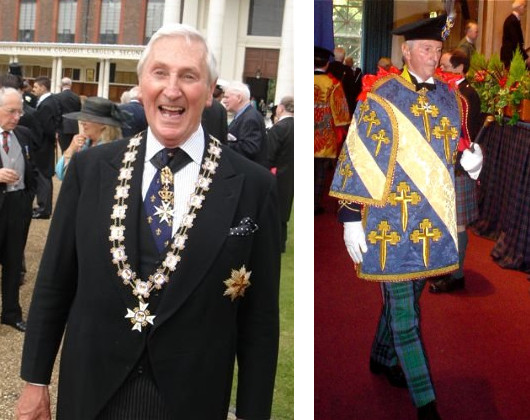
Left: Representing the Royal Stuart Society at the Henry IX commemoration at the Royal Hospital Chelsea. Right: In his capacity as Garioch Pursuivant of Arms, at the XXVIIth International Congress of Genealogical and Heraldic Sciences in 2006.
David had a passion for architecture, and especially that of his native Scotland. Returning in 1970 after a spell in Africa, he undertook the restoration of two family properties: Cushnie House, built in 1688 by Alexander Lumsden and Tillycairn Castle, built in 1540 by Matthew Lumsden. He later went on to restore Leithen Lodge at Innerleithen, an 1880s shooting lodge built in a distinctly Scottish take on the Arts & Crafts tradition. Under the auspices of the Castles of Scotland Preservation Trust, in 1994 he oversaw the restoration of Liberton Tower just south of the Royal Observatory in Edinburgh.
“David was a unique man possessed of an insatiable love of life and learning,” his friend Rafe Heydel-Mankoo said. “He will be deeply missed and fondly remembered by those fortunate enough to have met him.”
“David was at the centre of so many things, and brought together so many different people,” said Lorna Angus, the wife of Robin Angus. “He could bring life to any gathering and he made so many good things possible.”
Robin Angus, meanwhile, said that David Lumsden “personified a world of precious things — things which are imperilled, but which never seemed imperilled when he was there.”
“David no longer visibly with us is unimaginable,” Robin continued. “What his friends must now do is keep the flame, and — as he did — pass it on to others with the same generous wisdom. He was the soul of old Scotland. I hope that, in Heaven, Raeburn will make amends for what the centuries did not allow, and paint his portrait.”
While I wholeheartedly agree with Robin, it must be said that those who were blessed to know David are left with a portrait of him in our hearts and minds far greater than even the brush of Raeburn could achieve.
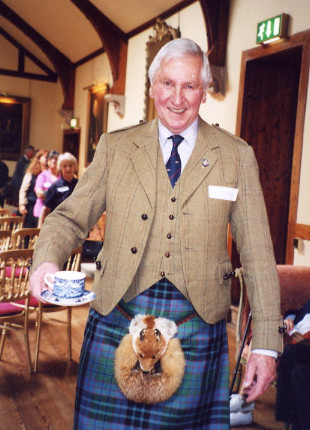
David Gordon Allen d’Aldecamb Lumsden
of Cushnie
1933–2008
“… hold fast to that which is good.”
— 1.Thess 5:21
Requiem aeternum dona eis Domine:
et lux perpetua luceat eis.
Requiescat in pace.
Search
Instagram: @andcusack
Click here for my Instagram photos.Most Recent Posts
- Amsterdam November 26, 2024
- Silver Jubilee November 21, 2024
- Articles of Note: 11 November 2024 November 11, 2024
- Why do you read? November 5, 2024
- India November 4, 2024
Most Recent Comments
- on The Catholic Apostolic Church, Edinburgh
- on Articles of Note: 11 November 2024
- on Articles of Note: 11 November 2024
- on Why do you read?
- on Why do you read?
- on University Nicknames in South Africa
- on The Situation at St Andrews
- on An Aldermanian Skyscraper
- on Equality
- on Rough Notes of Kinderhook
Book Wishlist
Monthly Archives
Categories


